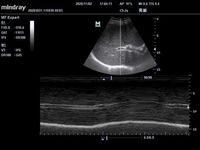Shoulder arthroscopy has become a common procedure, yet it often leads to significant postoperative pain, prompting researchers to evaluate improved analgesic techniques. A recent study published on March 20, 2025, assessed the effectiveness of combining ultrasound-guided coracoid approach brachial plexus block with posterior suprascapular nerve block in managing pain after right shoulder arthroscopy.
The study involved fifty patients, who were divided into two groups of twenty-five each. Group A received an ultrasound-guided supraclavicular brachial plexus block using 25 mL of 0.3% ropivacaine, while Group B was administered the coracoid approach brachial plexus block alongside the posterior suprascapular nerve block. This methodology aimed to mitigate the commonly experienced complications associated with traditional nerve blocks, particularly hemidiaphragm paralysis.
Notably, the incidence of hemidiaphragm paralysis was significantly lower in Group B compared to Group A under both calm and deep breathing conditions. Pain scores collected at 1, 6, 12, 24, and 48 hours post-surgery showed no significant differences between the two approaches. However, diaphragmatic excursion, a measure of diaphragm movement, highlighted the advantages of the new technique, as it exhibited less impairment in Group B.
Conducted at The First Hospital of Qinhuangdao between January 2020 and December 2021, the study marked a critical advancement in pain management strategies for shoulder surgery. Researchers emphasized the benefits of the coracoid approach, explaining that it reduces the likelihood of phrenic nerve involvement, a crucial factor especially for patients with preexisting pulmonary conditions.
According to the authors of the article, "Compared with supraclavicular brachial plexus block, coracoid approach brachial plexus block combined with posterior suprascapular nerve block can significantly reduce the occurrence of hemidiaphragm paralysis with an equivalent postoperative analgesic effect for shoulder arthroscopy."
This careful design aimed to address the dilemma posed by traditional pain management approaches that frequently lead to hemidiaphragmatic paresis and consequent respiratory complications. The results demonstrate that utilizing the coracoid technique in conjunction with suprascapular nerve block presents a promising alternative, allowing for adequate pain control while minimizing detrimental effects on diaphragm function.
The results revealed that while hemidiaphragm paralysis occurrence in Group B was reduced significantly, postoperative pain assessments remained comparable to those of Group A, thereby affirming the new method's efficacy. Within 30 minutes post-block, diaphragmatic excursion in Group A showed a significant decrease, contrasting with only minimal impact seen in Group B.
Additionally, the trial, registered with the Chinese Clinical Trial Register (ID ChiCTR2100043069) on February 4, 2021, highlights the need for continued exploration into effective analgesic methods devoid of adverse respiratory effects. The study laid the groundwork for future investigations aimed at refining and enhancing shoulder surgery outcomes while prioritizing postoperative recovery.
This novel approach, which leverages ultrasound guidance for nerve blocks, underscores broader trends in surgical medicine emphasizing patient-centered care and safety. As shoulder arthroscopy continues to grow in popularity due to its minimally invasive nature, finding balanced techniques for effective pain relief without associated risks remains paramount.




